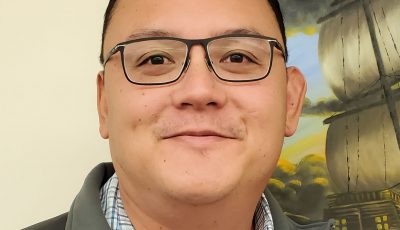Medical Referral in transition toward sustainability—Muña
The Commonwealth Healthcare Corp., which is now in charge of the CNMI’s Medical Referral program, is putting in place many changes toward making the program sustainable by ensuring that all other benefits that are available to people are exhausted before they avail of the program.
That essentially means availing of a locally available form of treatment before opting for an off-island medical referral. This, according to CHCC CEO Esther Muna, will ensure the program’s sustainability.
She said he CNMI’s Medical Referral program has been heavily underfunded and has been operating far beyond its means for many years, resulting in millions of dollars in deficit.
“The program has always been under-budgeted. If I’m not mistaken, about $2 million is allocated to the program every year but the program actually spends about $18 million,” she said.
Fortunately, this year, through the federal American Rescue Plan Act, the Medical Referral program was allocated $15 million in total and, instead of exhausting the funds straight away, CHCC is currently taking the necessary strides to ensure that this money is used as a revolving fund for the program.
“ARPA isn’t going to be here forever. What we’re trying to do is make use of that money as a revolving fund and that, ultimately, if we spend some of it, we would get reimbursement for it from other entities like Medicaid, as they cover for transfers, and hopefully through some changes also be able to get reimbursement for lodging and other accommodations. We want this funding be able to sustain the program so when you need it, it’s there,” she said.
Since taking over the program back in October 2021, CHCC has taken steps toward a more sustainable Medical Referral program and the first order of business was taking a hard look into the program’s regulations in order to develop policies that comply with such regulations.
“The first thing we did was really look at the regulations and there was a lot of things there that really describes what we should do and what we shouldn’t do. One of the first things that we are working on, as we are still in transition, is the development of some policies and procedures that are basically aligned with the regulations,” she said.
One of the policies that have been put in place, Muña said, has basically been a more intensive review process of each program applicant. This means Medical Referral program staff now closely look into each Medical Referral applicant to ensure that if there are any other medical benefits available to them, they exhaust these benefits first before resorting to Medical Referral program funds.
“The main purpose of the medical referral program is really to provide help for people that need medical attention, usually in emergency situations like life or death, that if a service is not available in the CNMI or at CHCC, we assist in the transfers of these individuals or referrals. So one of the regulations of the Medical Referral program specifically states that you use Medical Referral funds as a last resort,” Muña said.
The goal, Muña explained, is to make sure that members of the community don’t look at the Medical Referral program as a sort of an insurance policy, but rather as a resource of last resort. By doing so, the Medical Referral program will remain reserved for medical referral applicants who really do not have any other means of getting the needed medical attention off island without going into even more debt.
“The Medical Referral program is not a payer. When I say a payer, it means it is not an insurance company. So, that›s one thing that I want to clarify—that the program is not an insurance company. The other thing is that the medical referral requires that you look at resources, whether it›s federal, or any other resources, that can pay before you start using the Medical Referral program. That›s what it means by being the resource for last resort,” she added.




























